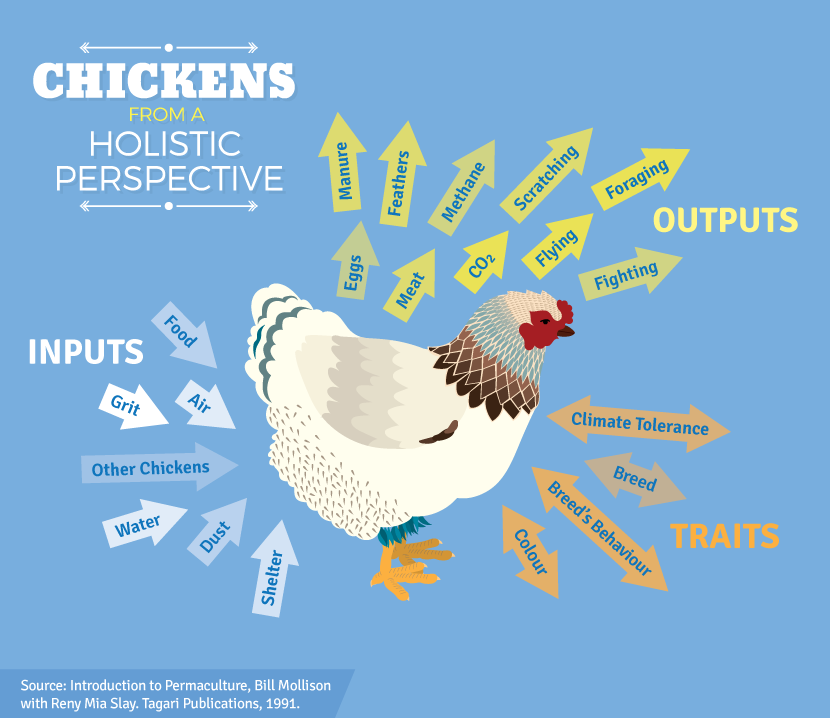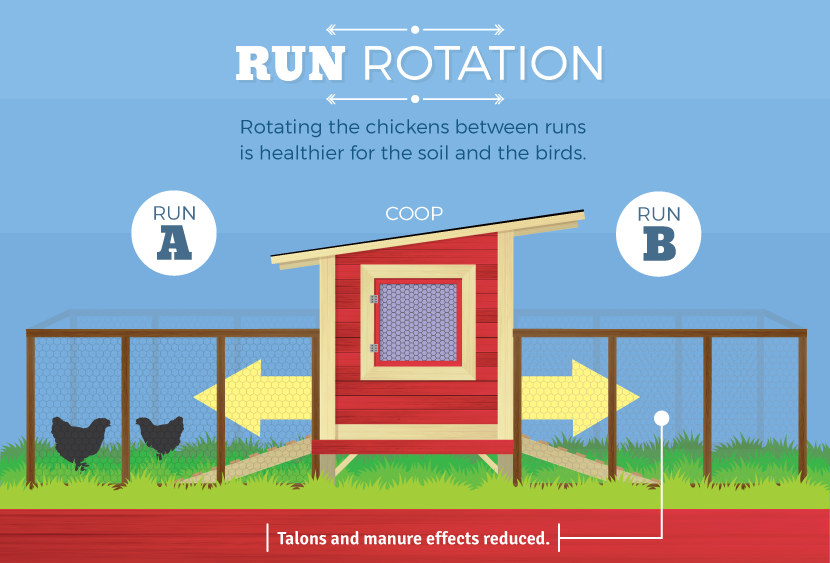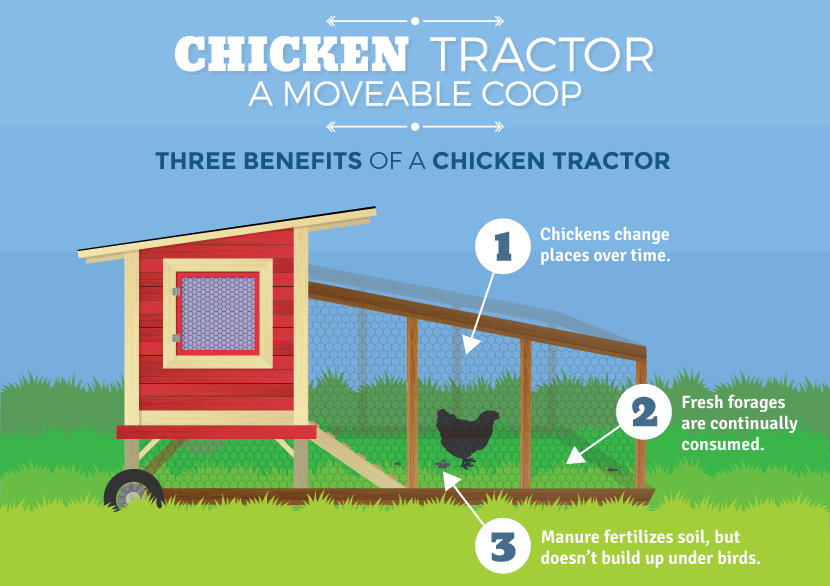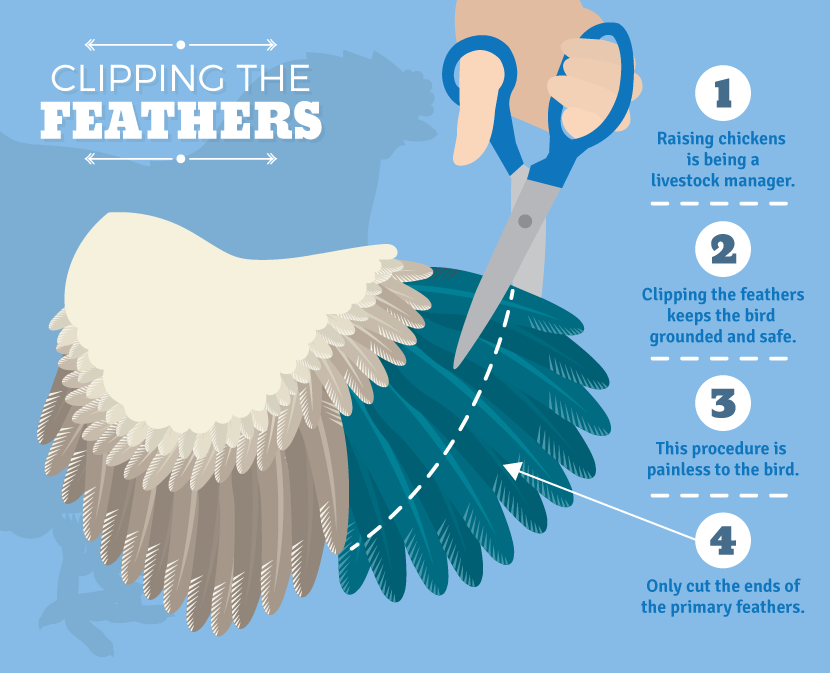Raising Backyard Chickens
Keeping chickens at home is becoming more and more popular. Dozens of books have been written on the topic, with more coming out all the time. But before you go to your local library or order your first hens, read up on some foundational information to get you thinking about how you might manage your flock holistically.
Go with the Flow
Backyard chickens – affectionately called chooks in New Zealand and next door in Australia – can offer pleasures and challenges for you and your family. The pleasures can be made greater and the challenges minimized by striving to understand the needs and behaviors of your birds.
One of the biggest problems with the industrial farming of chickens for eggs or meat is that the methods employed do not honor many of their needs and behaviors. For example, overcrowding goes against the inherent nature of chickens and requires de-beaking to keep them from inflicting great harm on one another.
Of course, you’ll provide your ladies with plenty of space, but they have other needs you’ll need to fulfill and behaviors to manage. The image below is adapted from a well-known illustration used by permaculturists around the world to explain the concept of holistic design. The illustration originally appeared in Introduction to Permaculture (1991), written by permaculture co-founder Bill Mollison with Reny Mia Slay.
From a holistic perspective, a chicken is more than an egg machine or a feathery bag of meat. Holistic chicken keeping allows you to maximize the benefits of a home flock while minimizing potential problems.

Accommodation
Holistic flock management begins when you are designing the chicken spaces for your yard. The first decision to make is whether to go with a fixed coop or a portable tractor (also called an ark in some countries). Each approach has benefits and drawbacks, and the decision on which one to embrace should be based as much on your planned level of involvement with the birds as on the layout of your backyard.
If you choose to build a chicken coop or poultry palace, the next decision centers around the provision of outdoor space. While the term “free range” is popular among foodies, hens ranging freely around your section can cause lots of damage to vegetable gardens and flower beds, and they can make a big mess. You can still have “free range” birds by building a designated chicken run or, better yet, two.
I previously wrote an article for Fix on crop rotation, so I naturally advocate rotating chickens between runs. Providing two runs and swapping your birds between them allows the land to recover from their intense scratching, and you can even grow an edible crop, such as silverbeet (Swiss chard), while the hens are next door. Another benefit of multiple runs is that manure is not concentrated in one place year after year.

Going Walkabout
Another increasingly popular way to house hens is the chicken tractor or ark: a portable pen that includes both a small sheltered coop and a floorless grazing area.
The advantages of this method involve both ends of the bird. In terms of the front end, chickens that eat fresh grass and herbs from your lawn require you to purchase less feed, and they are likely to be healthier due to a constant diet of fresh greens. In terms of the back end, moving the tractor daily or weekly means that manure is never allowed to build up in one place, and the chickens’ health is protected because they are not living for long periods among their own droppings.
If you are especially clever, you can use a chicken tractor alongside a scythe to eliminate the need for a loud, polluting lawn mower. I have personally used a tractor and scythe to manage our lawn for the last four years. If your backyard is large enough, you could plant some of it to create a small food forest and use the tractor to manage the vegetation growing between the fruit trees.

Whether you decide to go with a coop or tractor, make sure your ladies have enough elbowroom. The minimum space per bird is two square feet in a coop and four square feet in a run, although some sources advocate up to three times as much run space. If the chickens are kept enclosed for long periods of time (such as winter), allow four square feet of indoor space per bird.
Other considerations when housing your flock include a good roof, adequate ventilation, plenty of perches, nesting boxes, and an easy-clean floor. When it’s time for you to build or buy a coop or tractor, keep these points in mind.
Clipping Wings
On a final note, I’d like to advocate for clipping wings. When you decide to keep backyard chickens, you are investing your time, money, and emotional attachment. The last thing you want is for a bird to die because it flew over a fence and into harm’s way.
Clipping wings is easy to do and painless for the birds. The biggest factor is your confidence to carry out the snip. When you become a backyard chicken farmer, you go beyond simply being a pet owner; you become a livestock manager. This new role could include dealing with sick or dead birds and killing and processing your own meat.

The more hands-on you are with your birds, the more confident you will become as a backyard chicken farmer. Clipping wings is a great place to start. Always use sharp scissors, and make sure you are cutting only feathers and not flesh. The above diagram is much more straightforward than any written description I could provide.
Clipping one wing only will make a chicken feel lopsided as soon as it attempts to fly. Many chicken keepers prefer this method rather than clipping both wings.
Embed the article on your site

